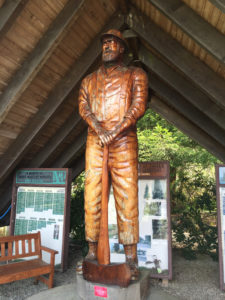Day 1: Hoh Rain Forest and Kalaloch Beaches
Hoh Rain Forest
The Hoh Rain Forest sits atop the list of must-do attractions on the Olympic Peninsula. One of only a handful of protected temperate rain forests in the Northern Hemisphere, this misty, moisture-laden area sees an average of 140 inches of annual rainfall.
Stop at the Hoh Rain Forest Visitor Center for information and tips on what to see and do during your visit. Right outside the door, you’ll find three easy loop trails worth exploring. The Hall of Mosses Trail (.8 miles) features moss-draped maples and flora and fauna that changes with the seasons. The Spruce Nature Trail (1.2 miles) meanders through younger forest of red alder and cottonwood, spotlighting landscape carved over thousands of years by glacier-fed waters. A paved, quarter-mile nature path easily accommodates wheelchairs and strollers.
The visitor center is also a starting point for longer, more challenging treks, including the 17.3-mile Hoh River Trail. If you’d like to hike for miles without the heavy load, consider using a llama to carry your gear.
Hiking is just one of several options for visitors. Hoh River float trips are a popular summer activity, and local guides offer fishing and photography trips year-round.
Kalaloch Beaches
Just 15 miles to the west, you’ll find yourself along the scenic Pacific Ocean coast. Easy access is available in the Kalaloch (pronounced clay-lock) area along U.S. Highway 101. Pebble-strewn Beach Trail 4 offers dramatic surf, brimming tidepools and opportunities to dip for smelt. (Watch out for the strong undertow.)
Don’t miss Ruby Beach, aptly named for its ruby-like rocks in the beach sand. Wander among sea stacks and driftwood logs and imagine the long-ago gold mining operation that stood on the spot in the early 1900s.

